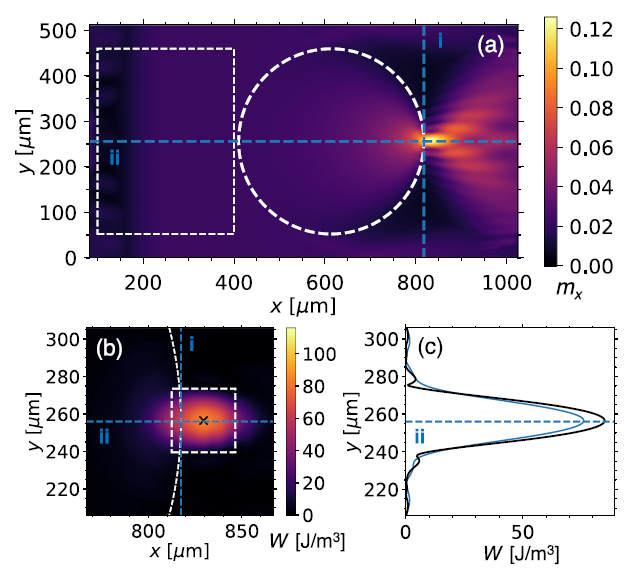N.J. Whitehead, S.A.R. Horsley, T.G. Philbin, and V.V. Kruglyak
Appl. Phys. Lett. 113, 212404 (2018)
We report on the theory of a Luneburg lens for forward-volume magnetostatic spin waves and verify its operation via micromagnetic modelling. The lens converts a plane wave to a point source, and vice versa, by a designed graded refractive index, realized by modulating either the thickness or the saturation magnetization in a circular region. We find that the lens enhances the wave amplitude by about 5 times at the lens focus, and 47% of the incident energy arrives in the focal region. A lens with small deviations from the optimal profile can still result in good focusing if the index is graded smoothly.

Fig.1. (a) Maximum amplitude of mx attained across the model over the duration of the simulation. The rectangular box indicates the region used to calculate the incident spin wave energy. (b) Energy density, W, near the focus region at the time of peak amplitude. The white square has a side of k and is centered on peak of the actual focus spot (black cross). (c) Energy density cross-sections for the line i from panels (a) and (b) (blue line) and at the x position of the actual focus (black line), at the times when the maximum amplitude occurs.

